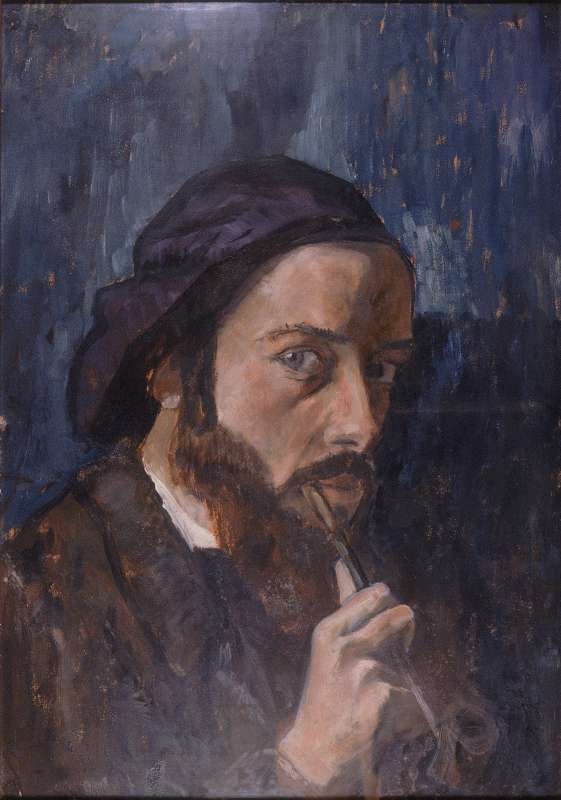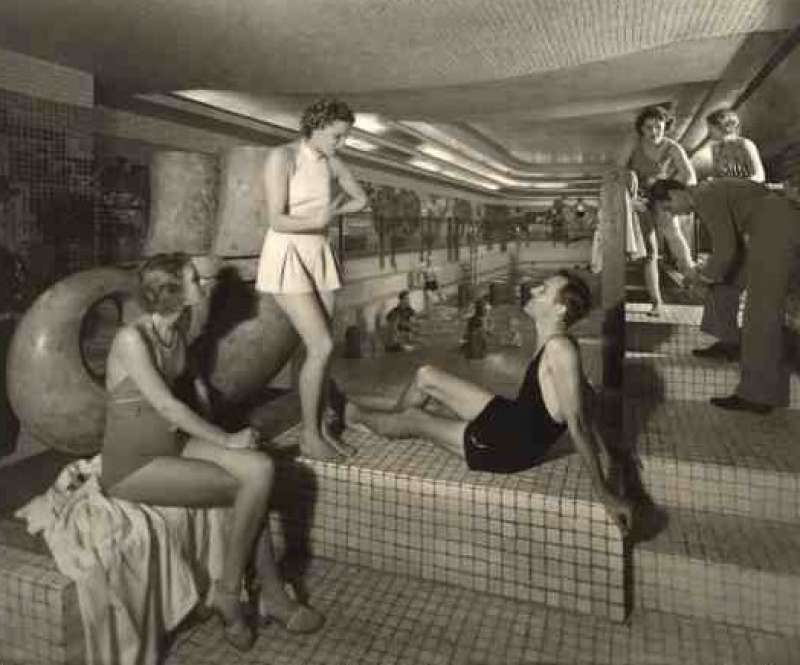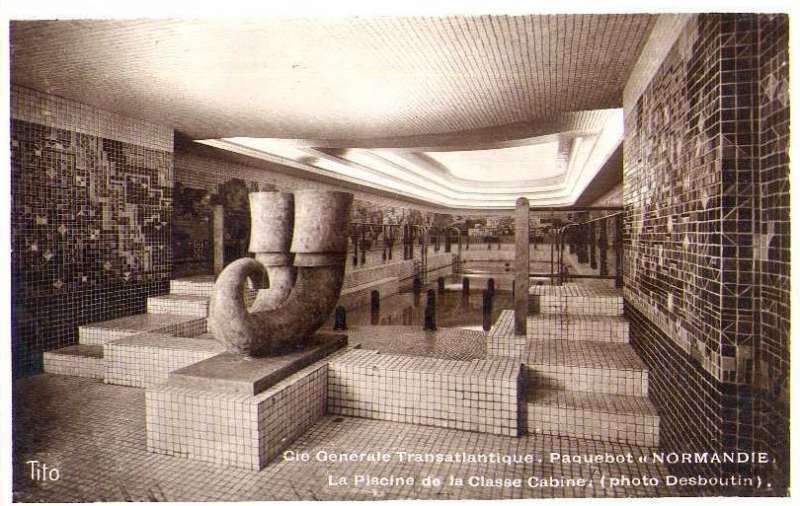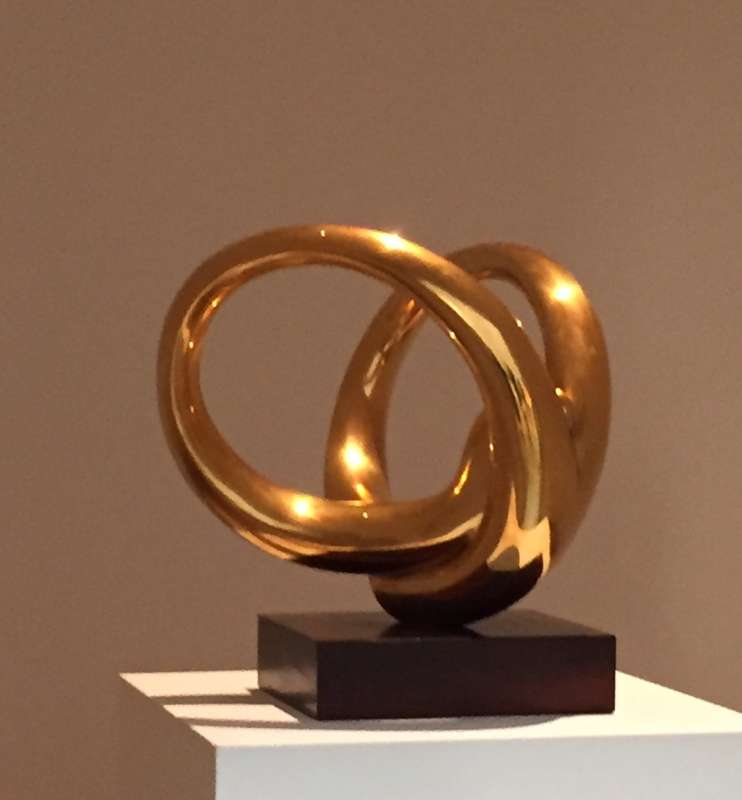
Self-portrait, 1908
Jean-Gabriel Chauvin (1889-1976) was one of the most talented sculptors of his generation; that of Arp (1886-1966), Laurens (1885-1954) and Pevsner (1884-1962), which followed that of Brancusi (1876-1957) and preceded that of Giacometti (1901-1966).
Their works, sometimes exhibited collectively, bear witness to the vitality and diversity of this type of sculpture, described as abstract.
Jean-Gabriel Chauvin, born in Rochefort in 1889, was the only survivor of his parents' six children. His twin brother died a week after his birth. His father, who owned some property, was a gas inspector, and his mother had no profession. There was no talk of art in the family, so much so that he kept secret his first sculpture, the aptly named Métamorphose, carved at the age of 17 with a simple knife.
Little is known about Chauvin, exactly as he wanted. He methodically stepped back from his work. The result is a posterity centered on his work and so little on his person.
Here are the few milestones we know for sure. On the death of his father, the young man began his apprenticeship in Paris, enrolling at the Ecole des Arts Décoratifs in 1908, then at the Ecole des Beaux-Arts in 1909. He frequented two workshops: that of Antonin Mercié and above all that of Joseph Bernard, an important master for Chauvin, whose practitioner he was until 1914. Bernard was one of the main promoters of the revival of direct-cut sculpture. This confirms Chauvin's belief in the practice of sculpting one's own work, in contrast to the widespread practice in the 19th century of entrusting the work to a practitioner, the best-known example being Rodin, who conceived his works by creating models in clay and entrusting their transposition into marble to other artists.
Working in wood and stone with equal talent, Chauvin produced his first so-called abstract sculpture: L'Essor in 1911. Essor does not describe a real object, but a process, an impulse.
Rather than abstraction, we prefer to speak of conceptualization or, better still, materialization, the embodiment of a concept in and through matter. The material, in this case bronze, one of the most complex and noble materials to have been used in sculpture since ancient Greece, is significant in itself by virtue of its complexity and, ultimately, its mystery. In Essor, Chauvin combines organic forms reminiscent of a living, carnal human body with geometric elements. Symmetry is fundamental to the construction of the work, as it often is in the artist's work. Symmetry is an element shared by the organic - human beings are symmetrical - and by geometry. Chauvin makes no distinction between the human and geometric kingdoms. Generally speaking, even if he moves away from the realist movement - which he mastered perfectly, as demonstrated by his early works (CR 5 and 6, respectively Tête de jeune fille and Faune, between 1913 and 1920) - he retains its essence, purifying reality to convert it into a sculpture that condenses it, and gives it a more universal dimension and force, thanks to the power of matter, without which, it must be said, nothing exists.
In 1928, the Au Sacre du Printemps gallery organized his first solo show. The gallery was taken over by Jeanne Bucher, who continued to show Chauvin's sculptures on a regular basis, collected by such discerning personalities as his friend the sculptor François Pompon and the couturier Jacques Doucet, one of the main promoters of the Art Deco style, after selling his collection of 18th-century works. Chauvin's works are unforgettable. The artist has the same exacting standards for the surface of his sculptures, which offer light a marvellous opportunity to exist.
Chauvin divides his year into two seasons and two locations: in Malakoff in winter, and from May to December in Port-des-Barques in Charente-Maritime, where he has a small house. Here, he creates all his wooden sculptures in the garden, keeping the practice of drawing and modeling for his Malakoff home.
The '30s were important years for Chauvin: the great Art Deco architect Pierre Patout commissioned him to design a luminous basin for the legendary Paquebot Normandie.


Patout commissioned him to create a monumental concrete sculpture, over ten meters high (now destroyed), for the 1937 Exposition Internationale, to be installed in front of the Pavillon de la Société des Artistes. The decade ends with the first state purchase : Le tombeau d'Eve (Centre Pompidou).
Ten years later, the Maeght gallery organizes an exhibition, considered the first retrospective of the artist's work; forty-one sculptures and drawings, it is a success.
During this period, Chauvin took his work in a new direction, creating plaster casts featuring fantastical architectures and explosions of rhythm.
In 1960, art critic Christian Zervos devoted an issue of Cahiers d'Art, the prestigious magazine founded in 1926, to Chauvin. Picasso, Giacometti, Braque, Matisse, Arp, Calder and Ernst were also featured in this reference magazine.
In 1962, Jean-Gabriel Chauvin, Serge Poliakoff and other artists represented France at the prestigious Venice Biennale.
Chauvin continued his work tirelessly until his death in 1976.

Key points:
Jean-Gabriel Chauvin :
One of the first sculptors of abstraction and one of the best representatives of "Art Deco"
A fierce loner dedicated to his work
Freedom of thought and design
Unique compositions blending the geometric and the organic
Perfectly polished surfaces that bring light to life
Jean-Gabriel Chauvin's drawings:
The virtuosity of charcoal
Dynamic, rhythmic compositions
The impression of volume and movement
Bold compositions
Sensual volumes

Secure payment
3DSecure 2.2

Free DHL Express delivery from €1,200
Carefully prepared parcel
Parcel tracking

Shipment insured
for the value of the artwork, covering theft and damages

Fairest prices
Certificate of authenticity
Two galleries in Paris
Receive an email as soon as a new artwork is added for this artist
Your message has been sent ! We will get back to you as soon as possible.
Please fill in the form if you need further information such
Please fill in your email address, an email will be sent with a link to update your password.
You can now place orders and track your orders.
To save your wishlist, you can log in or create an account :